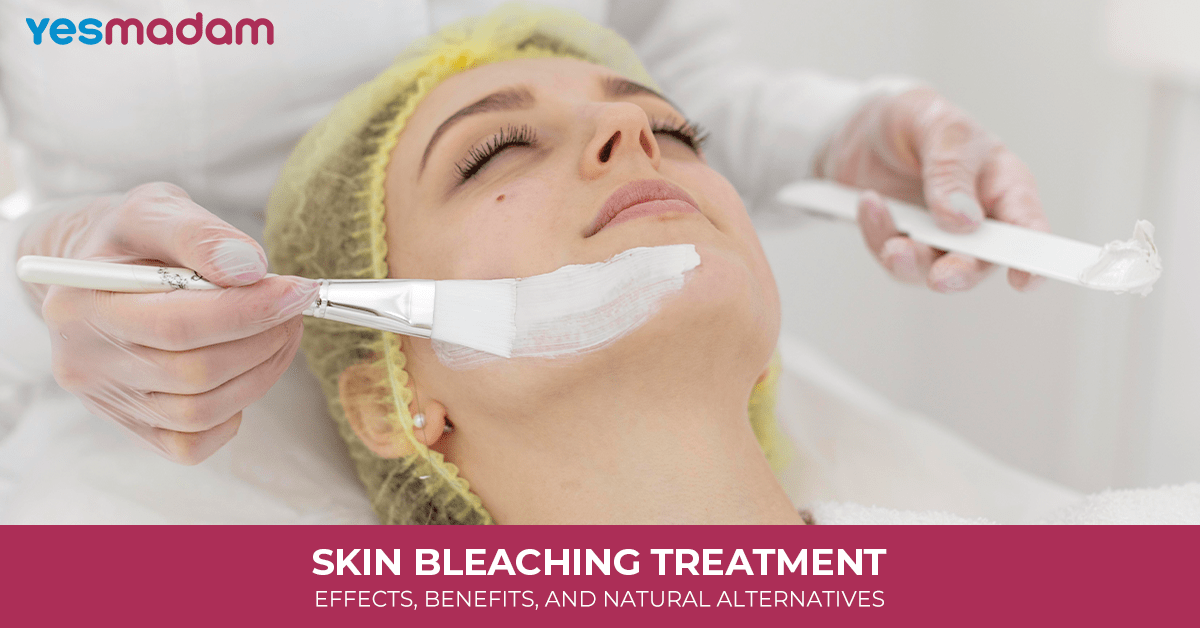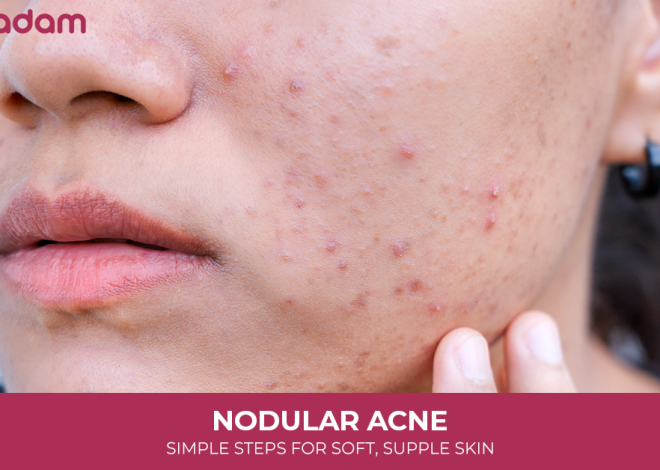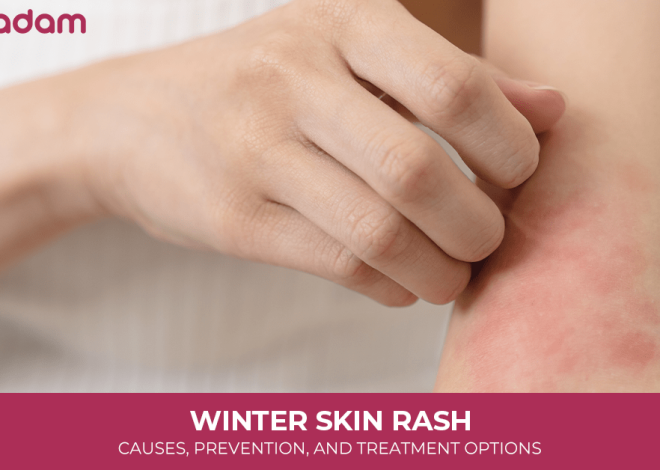
Skin Bleaching Treatment: Effects, Benefits, and Natural Alternatives
One of the most effective methods for skin whitening in today’s time is skin bleaching treatment, used to lighten hyperpigmentation, reduce dark spots, and enhance complexion. Like any cosmetic treatment, it sparks debates over benefits and risks. Some highlight its effects on appearance, while others caution about prolonged use. Natural options, such as bleaching skin at home, offer safer alternatives. This guide explores what bleach does to the skin, how treatments work, potential side effects, natural remedies, and FAQs.
Let’s get started…
Table of Contents
What is Skin Bleaching Treatment?
Skin bleaching treatment refers to cosmetic practices that lighten the skin tone by reducing melanin concentration. Melanin is the natural pigment that gives color to our skin, eyes, and hair. Skin-lightening treatments work by reducing or suppressing melanin production, resulting in a lighter and more even complexion.
Some common methods include:
- Topical creams and gels: Usually contain ingredients like hydroquinone, corticosteroids, or retinoids that help reduce melanin production and fade dark spots.
- Chemical peels: Use exfoliating acids such as glycolic or salicylic acid to remove the top skin layers, revealing fresher, brighter skin.
- Laser therapy: Targets melanin in pigment cells to break it down, effectively reducing dark spots and evening out skin tone.
- Homemade remedies: Natural options like lemon juice, turmeric, or aloe vera may gently lighten skin, though results are slower and less intense.
What Bleach Does to Skin?
When applying bleaching agents, they penetrate the skin’s upper layers and interfere with melanin production. Hydroquinone, one of the most common ingredients, reduces the activity of melanocytes (cells that produce melanin).
While this leads to a lighter skin tone, it also makes the skin more sensitive to sunlight and external irritants. Over time, excessive use of bleach may damage the natural skin barrier and cause more harm than benefit.
In simple terms, what bleach does to skin is both beneficial and risky; it lightens the complexion but can also weaken the skin if not used properly.
Effects of Skin Bleaching Treatment

The effects of skin bleaching vary depending on the method, frequency, and individual skin type. They can be both positive and negative:
Positive Effects:
- Reduction of hyperpigmentation and dark spots.
- Evening out the uneven skin tone.
- Boosted confidence for those struggling with acne scars or melasma.
Negative Effects:
- Skin irritation, redness, and dryness.
- Increased sensitivity to UV rays, leading to sunburn.
- Long-term risks such as premature aging or skin thinning.
- In rare cases, ochronosis (a bluish-black discoloration of skin) from prolonged hydroquinone use.
It’s essential to weigh these outcomes carefully before opting for a treatment.
Benefits of Skin Bleaching Treatment

Despite the controversies, many people highlight the benefits of bleach on skin when used moderately under professional guidance. Some of these include:
- Brightening Effect: Skin appears more radiant and youthful.
- Scar Reduction: Helps fade acne scars and blemishes.
- Confidence Boost: A more even skin tone can improve self-image.
- Temporary Quick Fix: Provides faster results compared to some natural remedies.
However, these benefits should not overshadow the risks. Professional consultation is highly recommended to avoid harmful side effects.
How to do Skin Bleaching Treatment Naturally at Home?
For those seeking safer alternatives, exploring how to bleach skin naturally at home can be a great option. Natural remedies may take longer to show results, but they minimize risks and nourish your skin.
Popular Natural Skin Lightening Methods:
Lemon Juice & Honey
- Lemon naturally brightens and fades dark spots.
- Honey keeps your skin soft and hydrated.
Try this: Mix a few drops of lemon juice with a spoon of honey, leave for 10–15 mins, then rinse.
Turmeric & Yogurt
- Turmeric fights pigmentation and calms the skin.
- Yogurt gently exfoliates and adds a natural glow.
Try this: Stir a pinch of turmeric into 2 spoons of yogurt, apply for 15 mins, then wash off.
Aloe Vera Gel
- Great for healing scars, soothing irritation, and fading spots.
- Feels super refreshing, especially after sun exposure.
Try this: Apply fresh aloe gel before bed and let it work overnight.
Papaya Mask
- Papaya enzymes exfoliate dead skin and brighten naturally.
- Leaves skin soft, smooth, and glowing.
Try this: Mash ripe papaya into a paste, apply for 20 mins, then rinse off.
Cucumber Extract
- Packed with hydration and antioxidants.
- Helps cool the skin, reduce puffiness, and lighten spots.
Try this: Blend into a paste and use as a mask, or simply rub chilled slices on your skin.
Remember: Always perform a patch test before applying natural remedies to avoid allergies.
Skin Bleaching Treatment: Risks and Precautions
Even with natural methods, it’s crucial to follow safety measures:
- Avoid overuse of lemon or acidic ingredients, as they can cause irritation.
- Always use sunscreen after any bleaching treatment to protect against UV damage.
- Do not combine multiple bleaching agents at once.
- Consult a dermatologist for professional advice before starting any treatment.
The Psychological Aspect of Skin Bleaching Treatment
Beyond physical results, skin bleaching has a strong psychological and cultural impact. In some societies, lighter skin is associated with beauty or social advantage, influencing individuals to seek bleaching treatments.
However, it’s important to embrace all skin tones as beautiful. Treatments should be chosen based on personal comfort and not societal pressure.
Professional vs. At-Home Treatments
- Professional Treatments:
Offer faster results, precision, and supervision, but can be expensive and sometimes harsh on the skin. - At-Home Treatments:
Cost-effective and convenient, but require consistency and patience.
Your choice depends on budget, goals, and skin sensitivity.
Cost of Skin Bleaching Treatment in India
Refer the table below to get the cost range idea for Skin bleaching treatment in India
| Treatment Type | Typical Cost Range (₹) | Notes & Variations |
| Topical Creams & OTC Products | 200 – 2,000 per product Premium serums: up to 5,000 | Widely available in pharmacies and cosmetic stores. |
| Chemical Peels | 1,800 – 5,500 per session Advanced/custom peels: up to 10,000 | Cost depends on peel depth and clinic reputation. |
| Laser Treatments | 4,000 – 30,000 per session Metro city clinics: 3,500 – 8,000 (for specific lasers) | Prices vary by laser type, area treated, and clinic location. |
| Skin-Whitening Injections | 2,500 – 40,000 per session Glutathione IV: 2,500 – 4,000 Combo injections: 4,000 – 6,000 Premium brands: 5,500 – 10,000/vial Packages (10 sessions): 20,000 – 75,000+ | Injections are among the most expensive options; often sold in packages. |
| Overall Treatment Packages | 5,000 – 1,00,000+ | Combination therapies (creams, peels, lasers, injections). Total depends on sessions and clinic. |
Conclusion
Skin bleaching treatment is a widely used method for achieving a lighter and more even complexion. While there are undeniable benefits of bleach on skin, it’s equally important to consider the risks and long-term effects. Understanding what bleach does to skin allows you to make informed decisions about whether to pursue professional treatments or explore safer, natural remedies such as how to bleach skin naturally at home.
Ultimately, skin care should be about health and self-confidence rather than conforming to beauty standards. Embrace your unique complexion, and if you choose bleaching, do so with caution and awareness.
FAQs
1. Is skin bleaching treatment safe?
Skin bleaching can be safe if done under professional guidance with regulated products. However, misuse or overuse may cause long-term damage.
2. How long do the effects of skin bleaching last?
Results can last a few months, but maintenance is required. Without continued use, pigmentation may return.
3. Can skin bleaching remove scars completely?
It can lighten scars and make them less noticeable, but complete removal is unlikely.
4. What is the best natural remedy for skin lightening?
Lemon juice with honey and turmeric masks are popular natural options, but results vary from person to person.
5. Does bleaching permanently damage skin?
Not always. Moderate use may not cause harm, but prolonged, unsupervised bleaching can thin and damage the skin.
6. Can men use skin bleaching treatments too?
Yes, skin bleaching is not gender-specific. Men and women can both use these treatments.
7. How soon can I see results from skin bleaching?
Topical creams may show results in 2–4 weeks, while natural remedies may take a few months.
8. Is sunscreen necessary after bleaching?
Absolutely. Skin becomes highly sensitive to UV rays, making sunscreen essential after treatment.
9. Are chemical peels safer than bleaching creams?
Both have risks. Peels are controlled by professionals, while creams can be misused. Consulting a dermatologist is best.
10. Can I bleach skin naturally without side effects?
Natural methods are generally safer but may still cause irritation for sensitive skin. Always do a patch test first.



